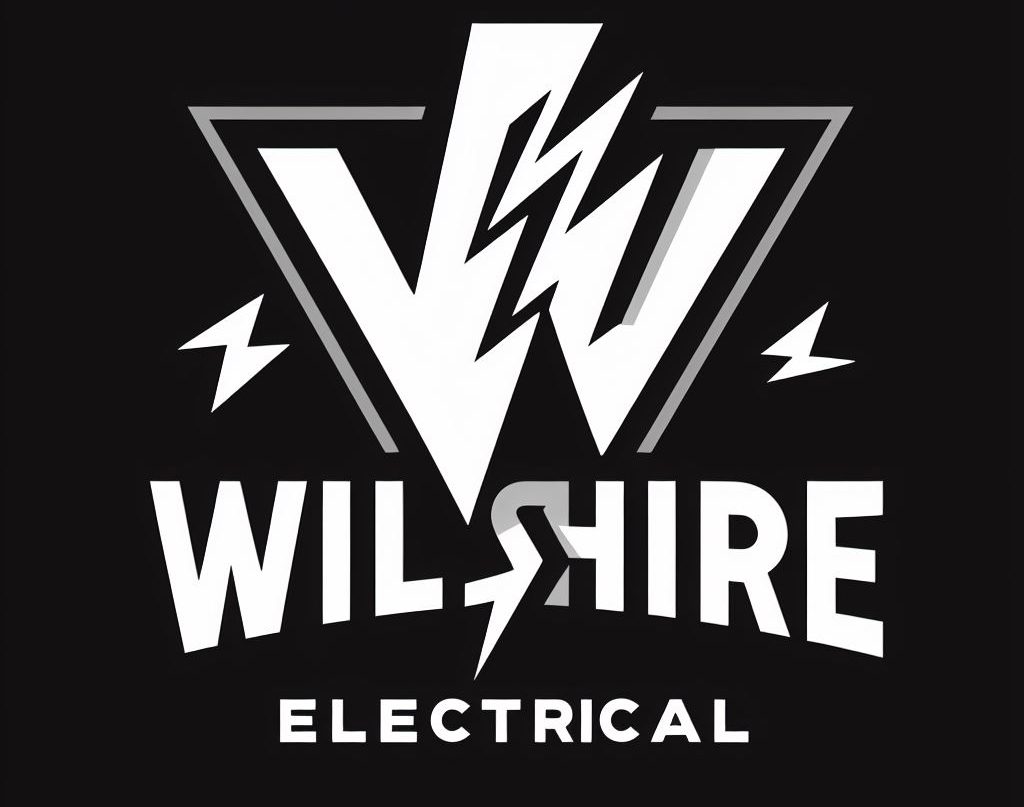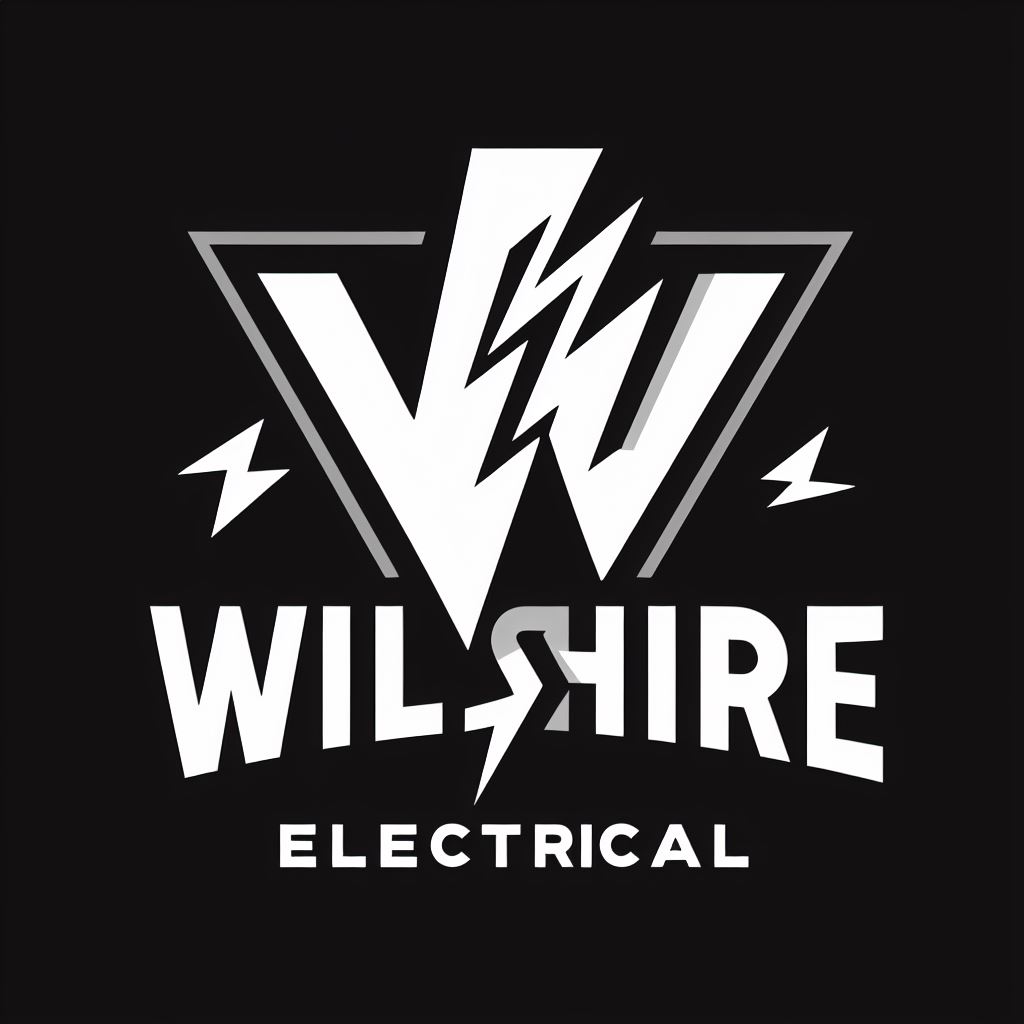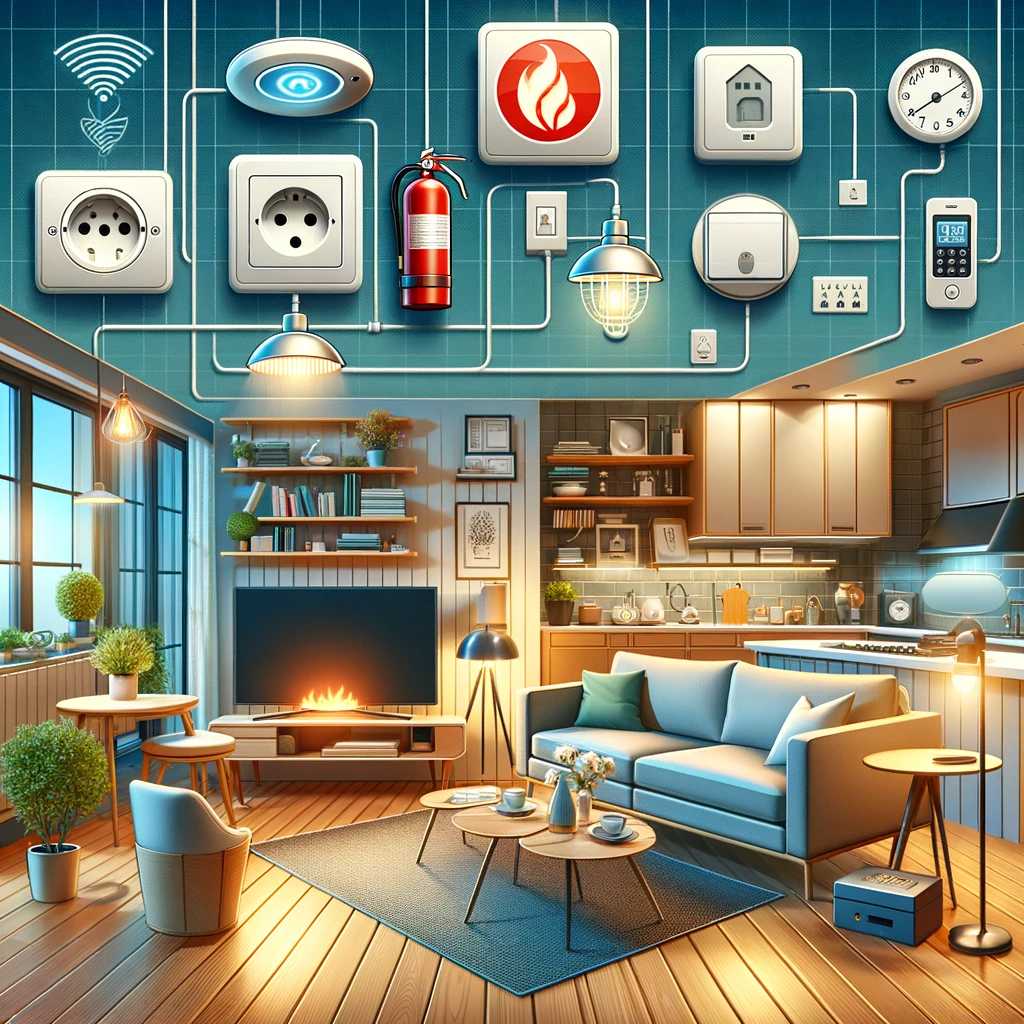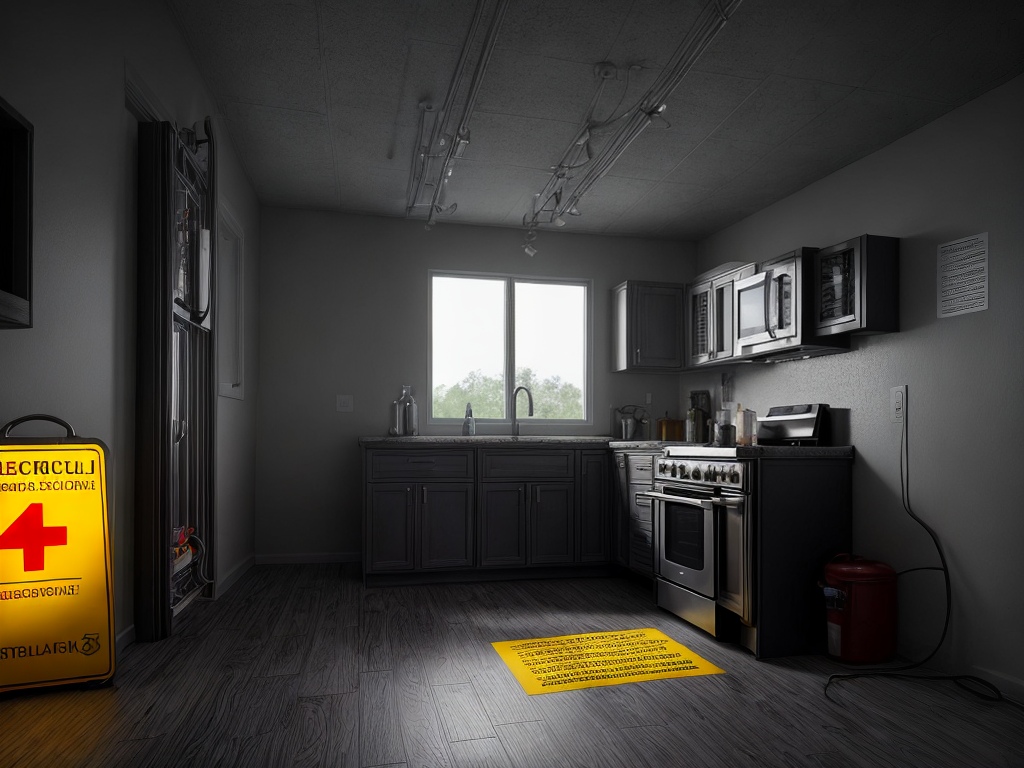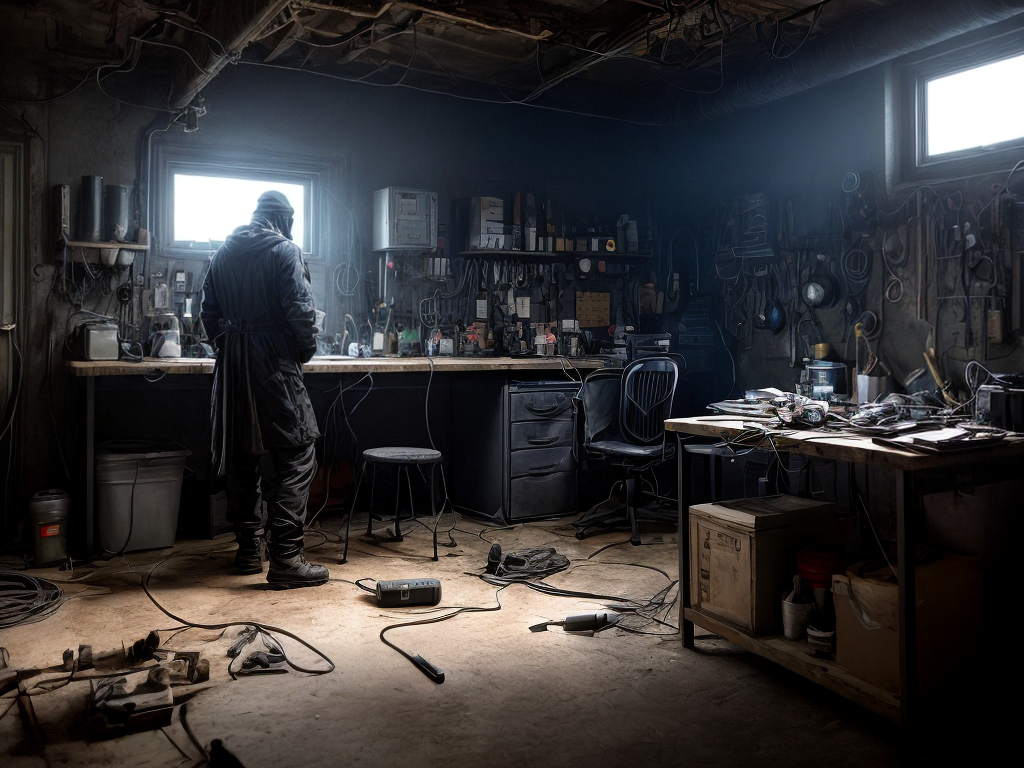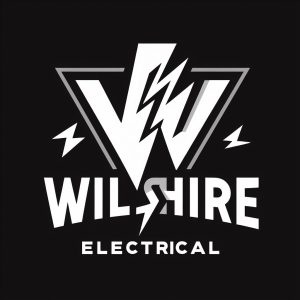Welcome to my in-depth guide on the exciting innovations happening in the world of electrical heating! As someone passionate about staying warm and cozy during the colder months, I’m always eager to learn about the newest technologies that can take my home heating experience to the next level.
In this article, I’ll be diving deep into all the recent advancements modernizing the trusty old space heater. From smart climate control features to improved safety mechanisms, there are so many cool upgrades to uncover. My goal is to leave you with a comprehensive understanding of how electrical heaters are being revolutionized.
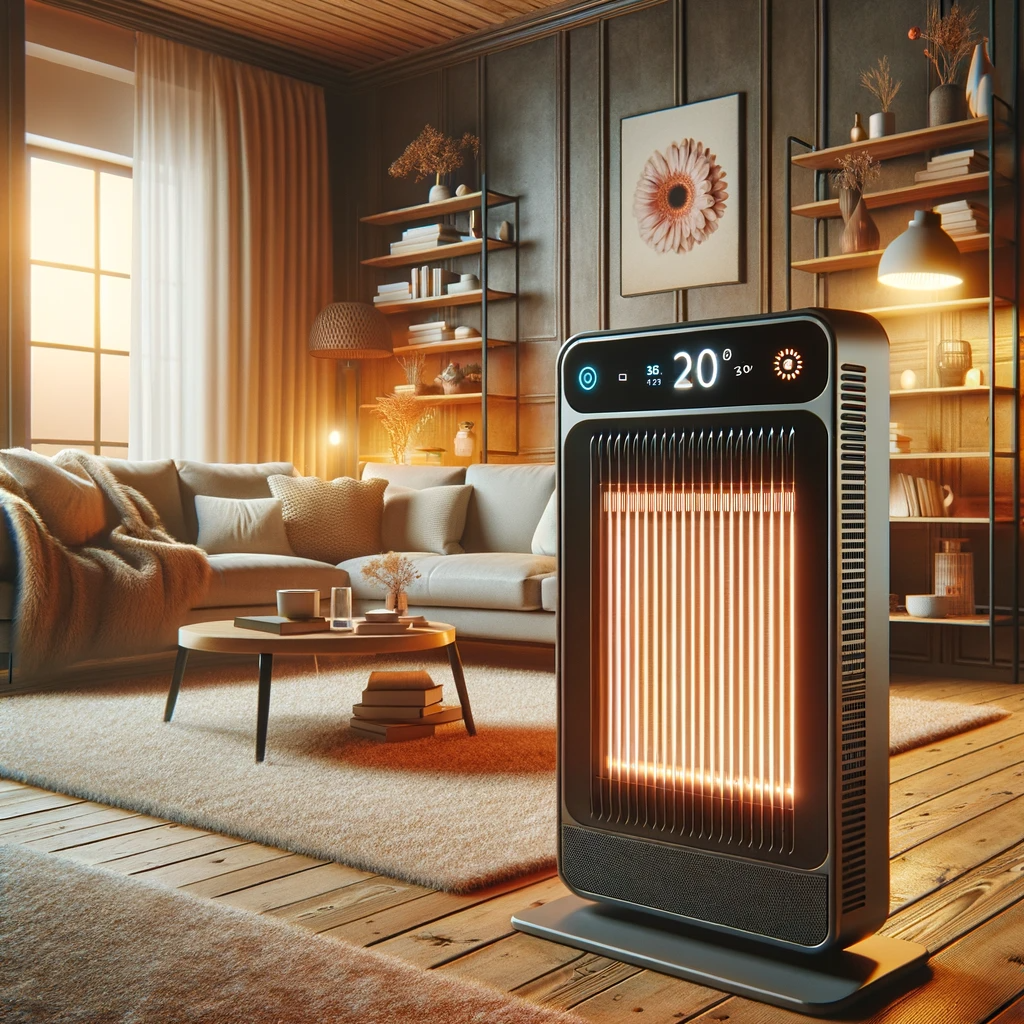
Get ready to get up to speed on the cutting-edge breakthroughs poised to disrupt the status quo of indoor heating. It’s amazing to see how much progress scientists and engineers have made in enhancing efficacy, efficiency, and versatility. Read on to have your mind blown by just how far electric heaters have come!
The Shift Towards Smart Climate Control
One of the biggest areas of innovation in electric heaters is the incorporation of smart climate control capabilities. Many of the latest models now come equipped with advanced thermostats, sensors, and WiFi connectivity that allows for precise regulation of temperatures. This marks a major shift away from traditional units that provided only crude mechanical dials for heat adjustments.
With smart climate features, I can program custom heating schedules tailored to my lifestyle and activity patterns. For instance, I can set the temperature to automatically reduce overnight when I’m sleeping under heavy blankets. And then 15 minutes before I wake up, my smart heater gradually warms my bedroom to a comfortable morning temperature.
Some high-end heaters even use multiple integrated sensors to actively monitor the room’s temperature, humidity, and occupancy. This allows the unit to make constant micro-adjustments to maintain my optimal heating preferences at all times. It’s like having a personal climate control assistant!
I love how this technology takes the guesswork out of operating a space heater. Now I can achieve the perfect ambient temperature without any wasted energy. Smart climate control provides a simplified and stress-free heating experience.
Safer Materials and Components
Safety continues to be a top priority among electrical heater manufacturers. With innovative new materials and components, modern space heaters contain numerous advanced safeguards:
- Cool-touch exterior housing – Special plastics disperse heat away from the exterior to prevent burns.
- Tip-over switches – If the unit gets knocked over, it will immediately shut off.
- Overheat protection sensors – Prevent fires by powering down when components reach unsafe temperatures.
- Child safety locks – Keypads with passcodes block access to settings.
- Stable wide-set bases – Low centers of gravity lessen chances of accidental tipping.
I love seeing how much attention is being paid to safety. With multiple fail-safe redundancies in place, I now feel ultra-secure using my new high-tech space heater. The risk of fire or injuries from accidental contact has been drastically reduced.
Peace of mind is so important when dealing with electrical appliances. These thoughtful safety upgrades let me operate my heater worry-free!
Focus on Energy Efficiency
Another major priority for the latest generation of heaters is enhanced energy efficiency. Engineers have found innovative ways to produce more heat using less electricity. Some examples include:
- Improved insulation – Better sealing minimizes heat loss to save energy.
- Eco modes – Lowers wattage usage when full capacity heating isn’t needed.
- Zone heating – Only heats the room you’re in to avoid waste.
- Thermoelectric tech – Leverages heat transfer rather than resistive elements.
- Motion sensors – Automatically reduce the temperature when the room is unoccupied.
- Timers – Set the heater to run only during select times/durations.
I love seeing how much innovation is centered around sustainability. With my new energy efficient heater, I’ve noticed a significant drop in my monthly electricity bills this winter. The savings quickly offset the initial purchase price. And I feel good knowing I’m doing my part to conserve energy and reduce my carbon footprint.
Green technology and money-saving efficiency – it’s a win-win combo!
Enhanced Portability and Flexibility
If you find space heaters too cumbersome to move around, then you’ll love the latest portable models! Manufacturers have responded to consumer demand for more dynamic and adaptable heating solutions.
Some examples of improved portability include:
- Compact lightweight builds – Easy to carry to any room.
- Integrated handles – Built-in grips for lifting and moving.
- Wheeled bases – Roll the heater from place to place.
- Rechargeable batteries – Cordless operation for total mobility.
- Smaller footprints – Take up less space and fit in tight spots.
- Low-profile designs – Slide conveniently under desks or furniture.
With these upgrades, I can achieve truly personalized heating no matter where I am in my home. The days of lugging bulky heaters from room to room are over! Whether I’m working at my desk, reading on the couch, or prepping meals in the kitchen, my lightweight portable heater follows me wherever I want targeted warmth and comfort.
Next generation portability frees me to heat the spaces I occupy rather than being stuck heating an entire open area. This flexibility is a total gamechanger!
Customizable and Targeted Heating
Speaking of targeted heating, another fantastic innovation is the ability to customize exactly where and how heat gets directed. State-of-the-art electric heaters now offer unparalleled control over heating zones.
Some examples include:
- Adjustable louvers – Aim heat in certain directions.
- Multiple heat settings – Select low, medium, or high intensity.
- Spot heating modes – Concentrate heat in a tight zone right in front of the unit.
- Timer/scheduling – Define when and for how long heating occurs.
- Smart sensors – Detect where you are and focus heating there.
- Voice control – Use spoken commands to direct heat.
The possibilities are endless for how I can tailor the perfect heating experience. If I get chilly just sitting at my desk, I can aim my heater’s louvers right at me. And if I leave the room, the motion sensors will automatically pause heating until I return.
Targeted control means I only heat the spaces I need when I need them. No more wasting money warming empty rooms!
Integration with Home Automation Systems
For the ultimate smart climate control experience, many latest generation heaters integrate with home automation and smart assistant platforms. This allows me to control my heater and customize heating schedules using:
- Smartphones/tablets – Adjust settings from my mobile device.
- Smart speakers – Use voice commands for hands-free adjustments.
- Smart appliances – Automatically coordinate heating with other connected home devices.
- Smart security systems – Leverage motion detection and occupancy insights to inform heating needs.
- Smart lighting – Link heating schedules to lighting conditions.
With everything interconnected, my heater becomes one component of a comprehensive home climate management ecosystem. Through the convenience of my smart home platform, I can orchestrate perfectly synchronized heating alongside ventilation, air conditioning, humidification, and more.
The integration capabilities vastly simplify heating automation. And with voice control via Alexa, Siri or Google Assistant, adjusting my electric heater is as easy as speaking a command!
Improved Fire Risk Mitigation
Despite the many safety advancements so far, engineers continue looking for ways to further reduce fire risks. The latest electric heaters feature even more robust protections:
- Heat flux sensors – Detect abnormal heat buildup.
- Current sensors – Monitor for electrical shorts/surges.
- Flame retardant materials – Prevent ignition and contain minor fires.
- Thermal fuses – Sever circuits if temperatures reach critical levels.
- Backup thermal cutoffs – A secondary measure if primary cutoffs fail.
- Automatic power cutoffs – Immediately shut down at the first sign of trouble.
With so many overlapping alarms and failsafes now built-in, the chances of faulty heaters starting fires have dramatically dropped. My newest model has multiple monitoring points to catch any potential malfunctions right away. I’m blown away by how proactive brands have become about mitigating fire risks!
Of course, proper placement and maintenance are still critical. But it’s amazing how engineers have gone the extra mile to develop virtually flame-proof electrical heating.
Revamped Internal Airflow Design
To maximize heating efficiency, the internal workings of electric heaters have also undergone substantial upgrades. Engineers are leveraging principles of fluid dynamics to optimize internal airflow and heat convection:
- Turbulators – Small fins that induce turbulence to improve heat transfer.
- Streamlined channels – Smooth interior walls and edges reduce resistance.
- Expanded flow paths – Wider ducts through the heater provide less restriction.
- Powerful fans – High velocity airflow quickly circulates warm air.
- Strategic outlet placement – Vents located to spread heat widely through natural convection.
- Angled louvers – Adjustable slats redirect air in an ideal upward projection.
- Supplemental blowers – Secondary fans that provide an extra push to heat flow.
With computational fluid dynamics software, manufacturers can precisely model thermal currents within the appliance. This allows them to optimize every internal detail to maximize heating performance. Just a few small tweaks to the airflow pathways and ventilation mechanics can dramatically boost heat output!
Next-Generation Heating Elements
Of course what matters is the heating element that generates all that wonderful warmth. And engineers have been hard at work improving the heat emitter itself:
- Coiled metal tubing – Allows for more compact emission units.
- Improved filaments – Advanced materials translate to faster, more uniform heating.
- Embedded ceramics – Added into coils to provide better heat radiation.
- Foil heating – Thin zig-zagging metallic strips transfer heat quickly.
- Thick film elements – Printed circuitry allows precise element geometry.
- PTC plastic – Special polymer compounds excel at dissipating heat.
- Graphite laminate – Super thin carbon sheets emitting remarkably high heat.
All these incremental advancements in the heating element translate to more options for consumers. Each technology has its advantages, whether speed, compactness, cost, or raw power. With a flourishing marketplace of specialty heating elements, brands can construct heaters tailored to any use case.
The expandable palette of advanced heating solutions is key to powering the next generation of electric appliances. Exciting times are ahead!
Use of Thermal Radiators and Ceramics
In particular, I’m intrigued by the expanded use of thermal radiators and ceramic elements:
- Infrared quartz tubes – Emit penetrating medium wavelength infrared.
- Ceramic plates – Durable oxide materials radiate gentle long wavelength infrared.
- Mica boards – Mineral sheets spread heat via radiation.
- Porcelain enamel – Glass coating helps reradiate rising heat.
Radiative heating provides an alternative to traditional forced-air convection. The infrared waves directly warm objects rather than just the air. This allows for more targeted and comfortable heating focused right where I want it.
By combining both radiative and convective heat transfer, electric heaters achieve the best of both worlds. Initial infrared warmth gets a boost from fans blowing the warmed air around for wide heat dissemination. It’s a win-win!
The modernized mix of radiators and ceramics alongside conventional elements ushers in a new level of customizable comfort.
Controlling Humidity Levels
Beyond just temperature control, some innovative heaters also now regulate humidity levels:
- Adjustable humidistats – Set your desired humidity percentage.
- Built-in humidifiers – Add moisture back into dry air.
- Dehumidification modes – Help extract excess moisture if needed.
- Hygrometers – Built-in sensors monitor current humidity.
- Auto-balancing – Software loops that hold humidity steady in the optimal range.
This ability to actively manage humidity improves overall comfort immensely. Dry air can lead to parched sinuses and cracked skin, while excessively humid air feels stuffy and stagnant. With the ideal humidity around 40-50%, I stay perfectly content.
Now I don’t need a separate humidifier or dehumidifier taking up space. Complete climate control is conveniently rolled into my electric heater!
Carbon Fiber and Nanotech Enabled Models
On the more futuristic end, some companies are even incorporating carbon fiber and nanotechnology:
- Carbon fiber coils – Exceptionally strong and lightweight heating elements.
- Nanocoatings – Thin molecular films provide insulation.
- Nanotube wiring – Faster transport of electricity.
- Nanoceramic composites – Enhanced infrared heat radiation properties.
While still emerging, these nanoscale materials have enormous potential to push heater innovation even further. The strength and novel quantum properties of substances engineered at the atomic scale are simply astounding.
Ongoing nanotechnology research promises to yield lighter, tougher, and vastly more efficient heaters in the future. Even as current models continue improving, the next monumental advance likely lurks on the horizon thanks to nanoscience!
Lower Noise and Disruption
A quick quality of life upgrade I appreciate is that latest generation heaters are much quieter:
- Soundproof internal insulation – Absorbs fan noise and vibration.
- Noiseless ceramic elements – Radiate silently.
- Whisper-quiet fans – Cut down on noisy forced air circulation.
- Anti-vibration rubber feet – Dampen operational noises.
- Two-stage fans – Allow low and high settings for less disruption at night.
I love that I can run my heater while reading or working without the annoying whir of loud fans. The dampened acoustics and vibration-reducing mounts make operation practically unnoticeable.
With near silent performance, I can comfortably keep my heater running all day in the background. Peace is an underrated perk I now get with modern heating appliances.
Cost-Effective and Budget-Friendly Options
While high-end models continue pushing technological boundaries, manufacturers haven’t abandoned customers needing simple and affordable options:
- Basic mechanical knobs – No complex digital controls.
- Smaller heating capacities – Require fewer expensive materials.
- Conservative flow ducting – Simple internal structure avoids advanced engineering.
- Lightweight plastic exterior – Cuts down on material costs.
- Minimal safety features – Only critical sensors and switches to lower price.
- Manual power switches – No programmable timers or thermostats.
Appliance companies understand everyone’s budget constraints differ. So they still offer a spectrum of good-value heaters covering just the heating basics.
When Shopping for an electrical heater, I’m glad I can compare pricing across a range of capabilities. With upfront costs no longer a barrier, staying warm affordably is a reality for everyone!
Eco-Friendly and Sustainable Models
For the environmentally-minded, many brands now emphasize eco-friendly designs:
- Recyclable materials – Enclosures made from reusable plastics and metals.
- Renewable packaging – Containers derived from sustainable bamboo, etc.
- Energy efficiency – Components selected to minimize electrical consumption.
- Off-grid operation – Units able to run on solar or battery power.
- Cleaner manufacturing – Production processes that avoid toxic materials.
- Corporate sustainability initiatives – Companies committed to reducing environmental impacts.
With climate change a rising concern, I feel reassured seeing how heater manufacturers are taking responsibility to reduce their ecological footprints. From durable construction to renewable operation, today’s green heaters are a win for both my wallet and the planet.
When I purchase an eco-friendly model, I’m voting with my dollars to support brands making tangible efforts to build a sustainable future. Going green no longer means sacrificing performance or comfort!
Enhanced Durability and Build Quality
On a practical note, the overall durability and longevity of modern electric heaters also keep improving:
- Rigidity reinforced frames – Withstand bumps and falls without damage.
- Rugged exterior armor – Resists dents, cracks, and scratches even with rough handling.
- Weatherized components – Internal parts protected from moisture and grime.
- Oxidation resistant metals – Prevent corrosion from airborne contaminants.
- High-temperature plastics – Durable polymers withstand up to 750+ degrees Fahrenheit.
- Overload protection – Guards against circuit damage from spikes.
- Comprehensive warranties – Provide coverage for up to 10 years.
With so many material upgrades and protective measures, I can count on my heater to keep performing reliably for years of sustained use. Even if I accidentally knock it over or expose it to intense conditions, the sturdy build quality ensures the unit bounces back unfazed.
Advanced engineering has brought newfound resilience to such a small appliance. My heater’s longevity gives me confidence in my investment and reduces the need for disruptive repairs or replacements down the road.
Support for Voice Commands and Remote Access
For easier hands-free operation, high-end heaters integrate with smart home assistants like Alexa, Google Home, and Siri:
- Voice activation – Power on/off and adjust temperature using spoken commands.
- Virtual assistants – Built-in microphones connect the heater to your smart speaker ecosystem.
- Remote mobile access – Control the heater from your smartphone anywhere.
- Automated scheduling – Use an app to define heating schedules and modes.
- Interoperability – Sync your heater with other smart devices and appliances.
With convenient voice-enabled controls, I can modify settings without lifting a finger. And when I’m away from home, I can still ensure the perfect temperature is maintained using my smartphone app.
Touchscreens and old-fashioned knobs are being replaced by voice-activated personal assistants. My heater now caters to my commands for an amazingly futuristic heating experience!
OLED/LCD Displays and Digital Interfaces
Even without smart connectivity, most heaters now have high-tech displays:
- Crisp OLED/LCD panels – Bright vibrant touchscreen controls.
- Intuitive menu systems – Settings are accessible through self-explanatory taps and swipes.
- Realtime monitoring – See temperature/humidity levels at a glance.
- Integrated tutorials – Built-in guidance to explain each feature.
- Expanded memory – Store and access your favorite heating presets.
- Visually appealing icons – Clear and recognizable graphics for mode selection.
- Nighttime dimming – Dark mode to avoid brightly lit disturbances after bedtime.
It’s amazing how advanced and user-friendly modern interfaces have become. Adjusting my heater feels like operating a sleek smartphone rather than some intimidating appliance.
With huge OLED panels and silky smooth controls, I enjoy tweaking the settings! The streamlined experience inspires confidence in newer technology.
Contemporary and Compact Aesthetics
Alongside the functional upgrades, manufacturers have also focused on revamping the cosmetic appearance of heaters. Contemporary models feature:
- Glossy contoured casings – Sleek low-profile outer shells.
- streamlined geometry – Curved surfaces and rounded edges.
- metallic/matte color schemes – Stylish modern finishes.
- integrated bodies – Hidden seams and unified build.
- Miniaturized footprints – Inconspicuous lightweight frames.
- vibrant LCD accents – LED flourishes and ambient lighting.
With refined silhouettes and subtle high-tech embellishments, space heaters now seamlessly blend into modern households. The clean minimalist look fits discreetly into both traditional and contemporary decor.
Rather than being an eyesore, my heater adds a touch of modern personality and polished tech to my rooms. Form and function harmonize beautifully!
Testing and Quality Assurance Advancements
Driving all the innovation is an increased rigor around safety and performance testing:
- 3rd party safety certifications – Trusted independent laboratory evaluation.
- Thermal stress testing – Units run continuously for months to validate reliability.
- Vibration/shock testing – Simulate rough handling and transportation conditions.
- Rain testing – Verify weatherproofing for outdoor models.
- Wired safety labs – Cutting-edge facilities purpose-built for appliance testing.
- Accelerated lifecycle testing – Compress decades of wear and tear into a short period.
- Automated test suites – Sophisticated software that uncovers edge case flaws.
- Crowdsourced field trials – Gather performance data by distributing units to volunteer homes.
Brands invest heavily in exhaustive testing to perfect designs before release. From shake tables to high-temperature endurance tests, engineers push prototypes to the limit to uncover potential weaknesses.
As a customer, I find it reassuring to know the reliable operation has been so thoroughly validated before launch. Quality assurance is a top priority driving ongoing heater improvements.
The Future of Electrical Heaters
It’s incredible looking back at how much electric heaters have evolved thanks to recent engineering initiatives and technology upgrades. With so much momentum, truly game-changing innovations likely lurk just around the corner!
Here are a few possibilities for what the next generation of heaters may offer:
- Adaptive learning – Heat intelligently based on home layout and family routine
- Frictionless setup – Auto-detect rooms and optimal placement
- Predictive optimization – Proactively adjust to maintain ideal conditions based on weather forecasts and occupancy schedules
- Nature-inspired biomimicry – Radiant heating surfaces emulating the sun’s warmth
- Wearable integration – Coordinate heating with body-worn health sensors
- Personal climate pods – Provide individually tailored heating zones for each home occupant
- Voice authentication – Recognize authorized household members to customize heating preferences
- Transparent AMOLED displays – Interact via gestures on an invisible touchscreen overlay
- Zero standby consumption – Intelligent sleep mode eliminates idle vampire power waste
- Next-gen graphene – Embedded heating elements leveraging remarkable thermal properties
- Modular expandable coverage – Stackable units to incrementally add heating capacity
The pace of progress in just the last few years has been staggering. It’s anyone’s guess what amazing ideas entrepreneurs may manifest next!
One thing is certain – the future is bright for electric heating. As technology continues advancing, the possibilities for providing effortless comfort remain endless.
I can’t wait to see what innovations await as engineers push the boundaries further! With such an exciting trajectory, our cozy smart homes are sure to keep getting smarter.
